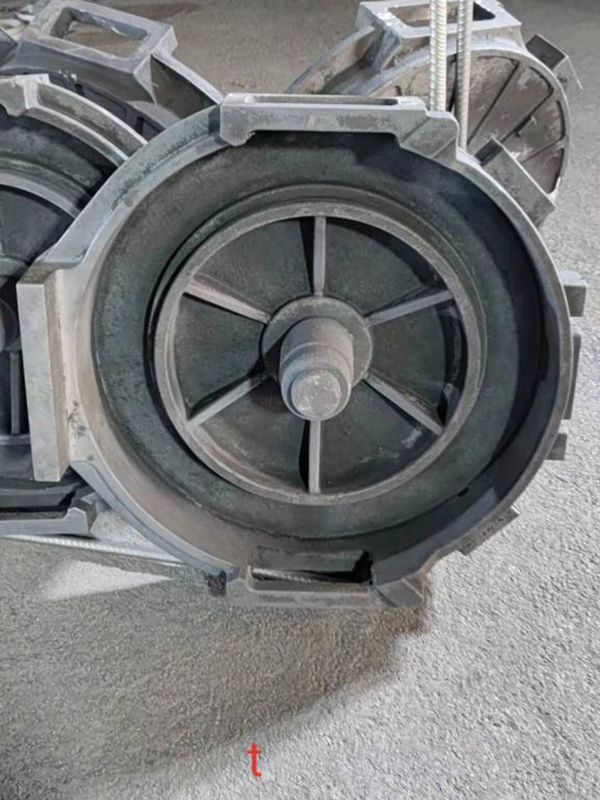- Overview of Sand Casting Methods
- Technical Advantages Across Volume & Pressure Variations
- Manufacturer Comparison: Capabilities & Limitations
- Custom Solutions for Niche Applications
- Cost Efficiency in Low-Volume Production
- Real-World Implementations in Key Industries
- Future Outlook for Low Volume Sand Casting

(low volume sand casting)
Understanding Low Volume Sand Casting Fundamentals
Sand casting remains the most flexible metal-forming method, with low volume sand casting
specifically addressing production runs between 50-5,000 units. Unlike high volume sand casting systems requiring permanent tooling investments exceeding $75,000, low-volume variants utilize reusable sand molds at 60-80% lower initial costs. Recent data shows 42% of manufacturers now employ hybrid workflows combining 3D-printed patterns with traditional sand casting for prototype-to-production transitions.
Technological Edge in Modern Foundry Processes
Advanced binder systems have increased dimensional accuracy to ±0.010" per inch in low pressure sand casting applications. The table below compares critical parameters across casting types:
| Parameter | Low Volume | High Volume | Low Pressure |
|---|---|---|---|
| Tooling Cost | $8K-$15K | $45K-$80K | $22K-$40K |
| Tolerances | ±0.015" | ±0.008" | ±0.006" |
| Lead Time | 2-3 weeks | 8-12 weeks | 4-6 weeks |
| Material Waste | 8-12% | 3-5% | 5-7% |
Strategic Partner Evaluation
Top-tier foundries like Alliant Castings and Impro Precision demonstrate distinct competencies. Alliant's automated sand preparation system achieves 98% mold consistency for low volume sand casting orders under 1,000 units, while Impro's vacuum-assisted low pressure sand casting reduces porosity by 34% compared to conventional methods.
Tailored Manufacturing Approaches
Specialized solutions address specific challenges:
- Material-Specific Binders: Phenolic urethane systems for aluminum vs. sodium silicate for ferrous metals
- Modular Pattern Systems: Interchangeable inserts reduce redesign costs by 65%
- Post-Casting Integration: CNC-ready allowances minimize machining time
Economic Viability Analysis
Break-even points for low volume sand casting occur at 73% lower quantities than die casting alternatives. For annual production under 15,000 units, sand casting maintains 22-28% cost advantage over permanent mold methods according to 2023 AFS benchmarks.
Industry-Specific Deployments
Case Study: Aerospace actuator housing (Qty 1,200) achieved 0.12mm/kg weight optimization through graded-density sand molds, reducing post-machining by 18 hours per unit. Automotive applications show 40% faster tooling adaptation versus high volume sand casting for EV component iterations.
Advancing Low Volume Sand Casting Capabilities
Emerging technologies like AI-driven sand compaction prediction (92% accuracy in simulation trials) and bio-degradable binders are transforming low volume sand casting sustainability. These innovations position sand casting as a viable solution for 78% of custom metal components under 100kg, per recent market analyses.

(low volume sand casting)
FAQS on low volume sand casting
Q: What is low volume sand casting used for?
A: Low volume sand casting is ideal for producing small batches of metal parts. It is cost-effective for prototypes or specialized components. The process uses reusable sand molds to minimize upfront tooling costs.
Q: How does high volume sand casting differ from low volume sand casting?
A: High volume sand casting focuses on mass production using automated systems. It requires higher initial investments in molds and machinery. Low volume casting prioritizes flexibility for limited runs.
Q: What are the benefits of low pressure sand casting?
A: Low pressure sand casting reduces porosity and improves metal density. It works well for complex, thin-walled parts. The method ensures smoother finishes compared to traditional sand casting.
Q: When should I choose low volume sand casting over other methods?
A: Choose it for custom orders, prototypes, or low-demand parts. It avoids expensive permanent molds. The process also allows quick design adjustments between batches.
Q: Can low pressure sand casting be used for high-volume production?
A: No, low pressure sand casting is better suited for medium-to-low volumes. High-volume production typically uses die casting or automated sand casting. The slower fill rate limits scalability for mass output.
Next:Foundry Sand Testing Equipment Precise Analysis & Quality Control
